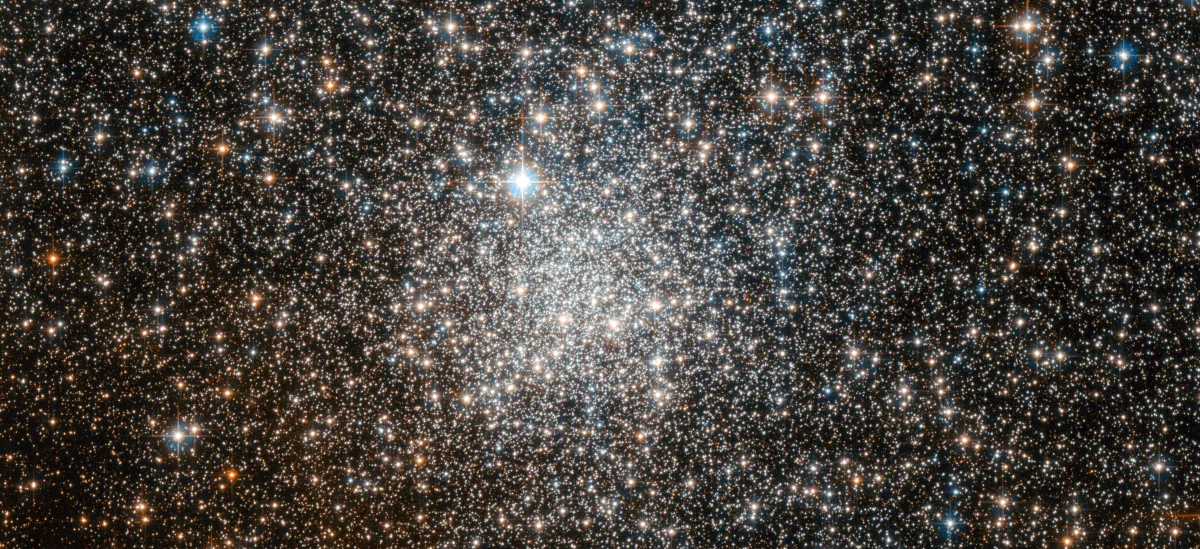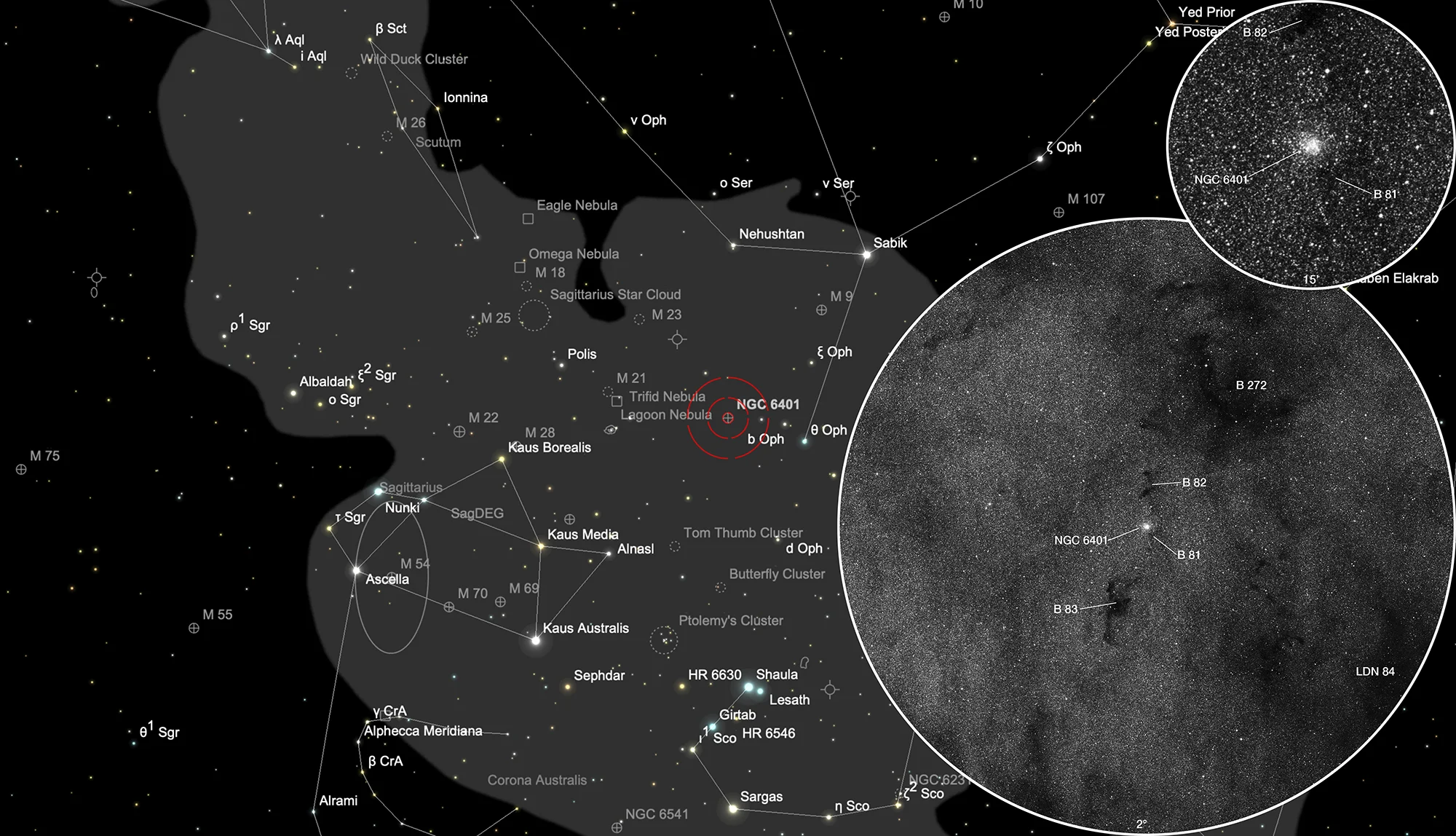Globular Cluster NGC 6401 with Dark Clouds Barnard 81, 82, 83

History
On 21 May 1784 William Herschel discovered an object which he classified as a «bright nebula» and listed it as I 44. He described it as «considerably bright, pretty large, having a nucleus or bright compressed spot.» [463] John Herschel first observed it on 1 July 1826 (sweep 30) from Slough, listed it as h1982 with the description: «A nebula with a pretty bright star attached.» [466] From the Cape of Good Hope he logged it as h 3697 with two observations: «pretta bright, round very gradually brighter in the middle». On sweep 453 (13 May 1834) he noted a diameter of 25" and «a star 13m involved, following the centre». Three years later on sweep 793 (27 June 1837) he logged a diameter of 2' and «has a star 11m, rather following the middle.» [11]
Sven Cederblad catalogued NGC 6401 incorrectly as nebula Cederblad 149. This incorrect classification is probably from Julius Scheiner, who gave its spectrum as gaseous (before 1912) at the Potsdam Observatory. [130, 364]
Physical Properties
| Designation | NGC 6401 |
| Type | GCL (VIII) |
| Right Ascension (J2000.0) | 17h 38m 36.9s |
| Declination (J2000.0) | -23° 54' 30" |
| Diameter | 4.8 arcmin |
| Visual magnitude | 7.4 mag |
| Metric Distance | 10.600 kpc |
| Dreyer Description | pB, pL, R, * 12 f inv |
| Identification, Remarks | WH I 44; h 1982=3697; GC 4314; GCL 73; ESO 520-SC11 |
Dark Nebulae
On his photographs Edward. E. Barnard found that dark markings in the sky were not always caused by a void of stars but by a dark opaque nebulae. He published his catalogue of 182 such «Dark Markings in the Sky» in 1919. His notes read: «81: Close southwest of NGC 6401. 82: 8' north of NGC 6401, 83: Narrow extension to the south. Several small stars in it.» [239] The nebulae 272 was added later in his «Photographic Atlas of Selected Regions of the Milky Way», published in 1927. [609]
| Name | Type | RA (J2000.0) | Dec (J2000.0) | Size ['] | Identifiers |
|---|---|---|---|---|---|
| Barnard 81 | DNe | 17h 38m 30s | -23° 55' 00" | 1 × 1 | Barnard 81; [DB2002b] G3.43+3.98 |
| Barnard 82 | DNe | 17h 38m 36s | -23° 46' 00" | 2 × 1.5 | Barnard 82; [DB2002b] G3.55+4.03 |
| Barnard 83 | DNe | 17h 39m 06s | -24° 07' 00" | 6 × 6 | Barnard 83; LDN 109; [CB88] 95; [DB2002b] G3.33+3.79 |
| Barnard 272 | DNe | 17h 37m 00s | -23° 24' 00" | 45 × 45 | Barnard 272; [DB2002b] G3.75+4.44 |
| LDN 84 | DNe | 17h 36m 06s | -24° 32' 00" | 34 × 34 | LDN 84; [DB2002b] G2.61+4.14 |
Finder Chart
The globular cluster NGC 6401 with dark nebulae are located in the constellation Ophiuchus. On 17 June they are in opposition to the Sun. From your location they can best be seen in the months February to November.
